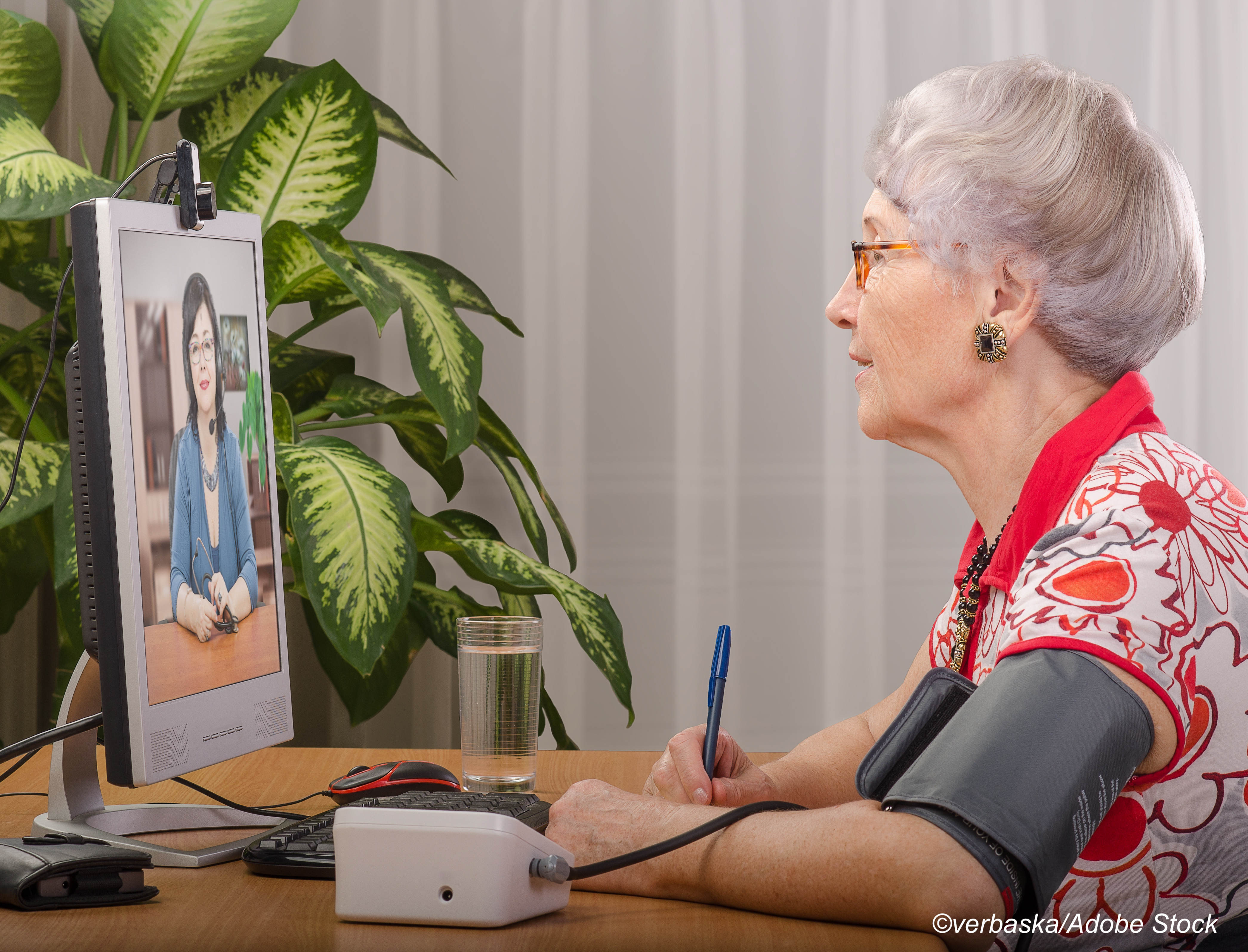Participation in a remote monitoring program aimed at assessing Covid-19 progression among non-hospitalized patients was associated with a 64% relative reduction in the risk of death, researchers reported.
The University of Pennsylvania Health System’s Covid Watch program involved twice-daily automatic check-ins with telemedicine clinician contact when symptoms worsened. During daytime hours, nurses were the primary responders, with support from nurse practitioners and physicians. Nighttime escalations were directly relayed to on-call nurse practitioners and physicians.
In a newly published study that compared outcomes among patients enrolled in Covid Watch to patients who received usual care without remote monitoring, participation in the program was associated with one additional life saved for every 400 enrolled patients, or about one less mortality every four days during peak enrollment weeks.
And 37.5% of deaths occurring within 60 days occurred outside the hospital in the usual care group, compared to none among the Covid Watch group.
The retrospective analysis findings were published online Nov. 15 in Annals of Internal Medicine.
“Enrollment in an automated text messaging service among community-dwelling adults newly diagnosed with Covid-19 in outpatient settings was associated with reduced mortality, potentially explained by increased and earlier presentation to the emergency department by those benefiting from early intervention,” wrote researcher M. Kit Delgado, MD, of the University of Pennsylvania Health System, and colleagues. “These results reveal a model for outpatients health system management of patients with Covid-19 and possibly other conditions where the early detection of clinical declines is critical.”
Adult, non-hospitalized patients with newly diagnosed Covid-19 were invited to participate in Covid Watch through a text message. Those who texted back confirming that they wanted to participate received twice-daily automated texts asking the question: “How are you feeling compared to 12 hours ago: better, same, or worse?”
Patients replying “worse” receive the follow-up question: “Is it harder than usual for you to breath: yes or no?”
A yes answer generated an alert for a telemedicine clinician to contact the patient by telephone within one hour, and patients were counseled that answering “worse” to the question would trigger a clinician call.
The monitoring, which was delivered in both English and Spanish, lasted for 14 days, with an additional seven days included if the patient requested it.
Both 30-day and 60-day outcomes were compared among Covid Watch participants and the enrolled patients who did not participate in the program (n=4,377).
Of the 3,488 patients in the Covid Watch program, close to 9 out of 10 (nearly 87%) responded to at least one text, and the mean number of check-in responses was 23. Patients were enrolled for a mean of 11.8 days, with a mean of 2.08 responses occurring per day.
Among the main study findings:
- At 30 days, Covid Watch patients had an odds ratio for death of 0.32 (95% CI, 0.12-0.72), with 1.8 fewer deaths per 1,000 patients (CI, 0.5 to 3.1) (P=0.005); at 60 days, the difference was 2.5 fewer deaths per 1,000 patients (CI, 0.9-4.0) (P=0.002).
- Patients in Covid Watch had more telemedicine encounters, emergency department (ED) visits, and hospitalizations and presented to the ED sooner (mean, 1.9 days sooner [CI, 0.9-2.9 days]; all P<0.001).
- At 60 days, 5 deaths had occurred among the Covid-Watch participants compared to 16 among the usual care group, with 0 and 6 deaths occurring outside of hospitals in the Covid Watch and usual care groups, respectively.
Study limitations cited by the researchers included the observational nature of the study and incomplete information on out-of-hospital deaths.
In accompanying commentary, James Faro, PhD, and Sarah Cutrona, MD, of the University of Massachusetts Medical School, Worcester, noted that a study strength was the participation of patients who were not Penn Med patients, as well as those without primary care providers.
More than a quarter of the enrollees had no primary care provider, 10% were covered by Medicaid, and the mean household income zip code of the participating patients was below the U.S. national average.
They wrote that this “facilitated enrollment of patients at risk for poor outcomes due to limited healthcare access and socioeconomic vulnerability.”
“Non-Hispanic Black patients were more likely to be enrolled in Covid-Watch than usual care; and Covid Watch reduced mortality across included racial ethnic groups.”
A study weakness was the under-representation of high-risk elderly patients, with just 5.6% of enrolled patients being older than 70 years of age.
“Engaging older adults in digital health interventions can be a challenge,” Faro and Cutrona wrote. “It is unclear whether older patients were offered Covid Watch but declined or whether it was less often offered to them.
“These data will be critical in understanding how to increase the reach of such interventions. Strategies for addressing the digital divide in older patients include identification of a care partner who can serve as a support or proxy. Interventions seeking to include older patients may benefit from focused guidance for patients, caregivers, and personnel enrolling patients.”
-
Participation in a remote monitoring program aimed at assessing Covid-19 progression among non-hospitalized patients was associated with a 64% relative reduction in the risk of death.
-
No deaths occurred outside the hospital during the study among participants in the Covid Watch text messaging program.
Salynn Boyles, Contributing Writer, BreakingMED™
This research was funded by the Patient-Centered Outcomes Research Institute. Delgado and the other researchers reported no relevant disclosures.
Cat ID: 190
Topic ID: 79,190,730,933,190,926,192,927,151,928,925,934




Create Post
Twitter/X Preview
Logout